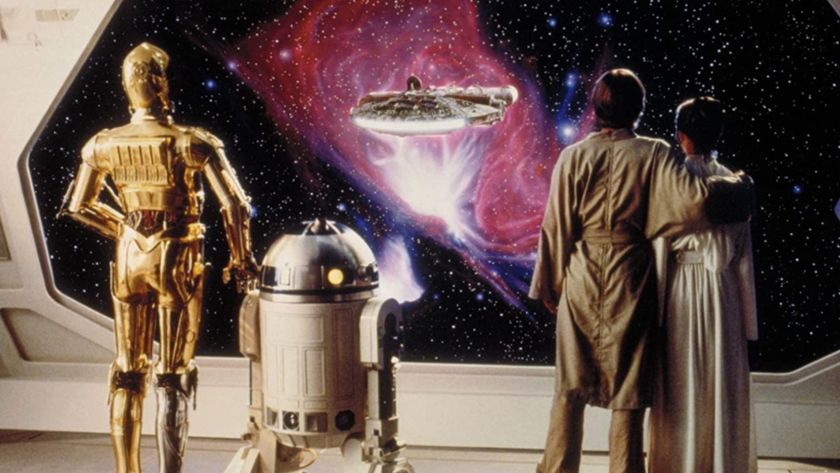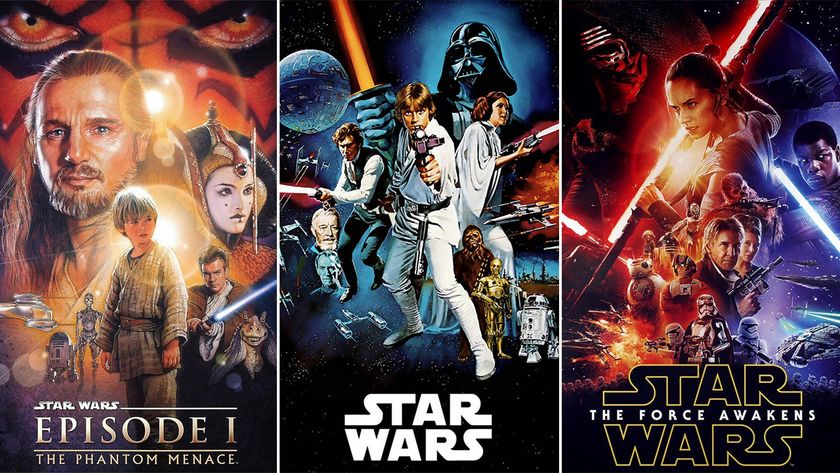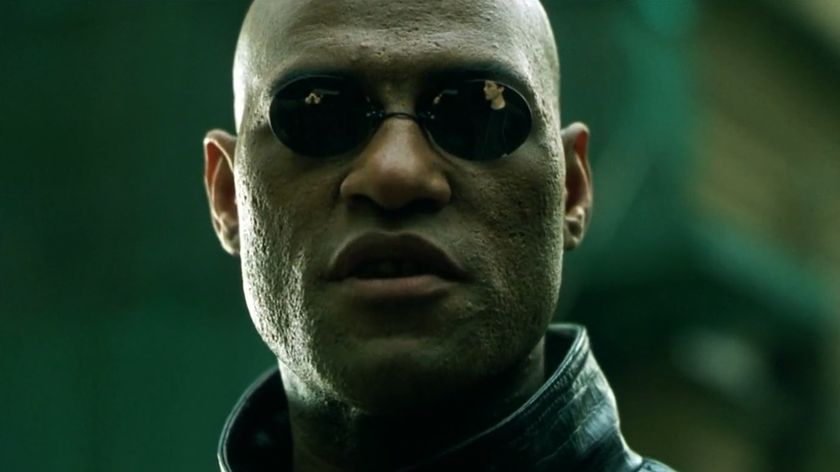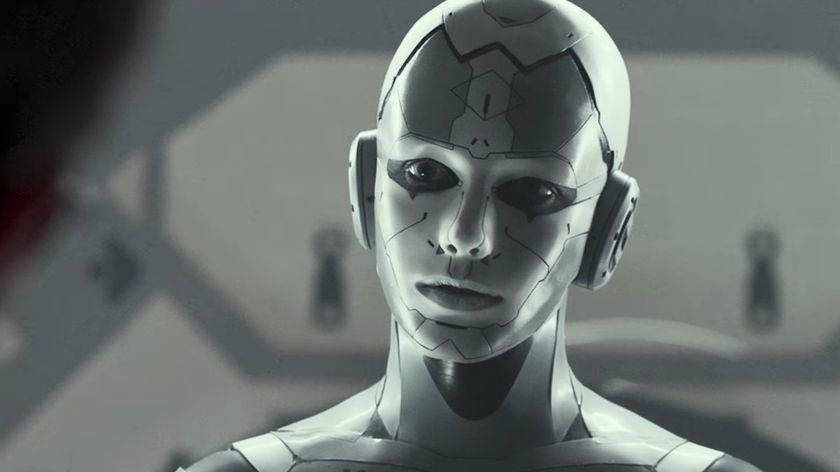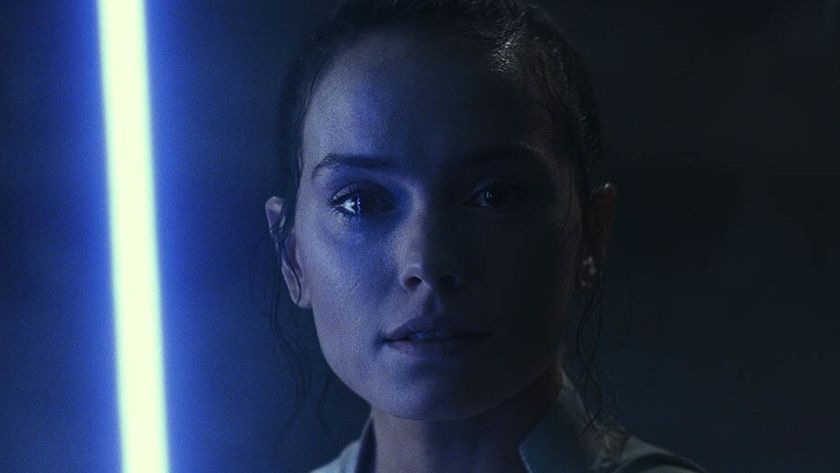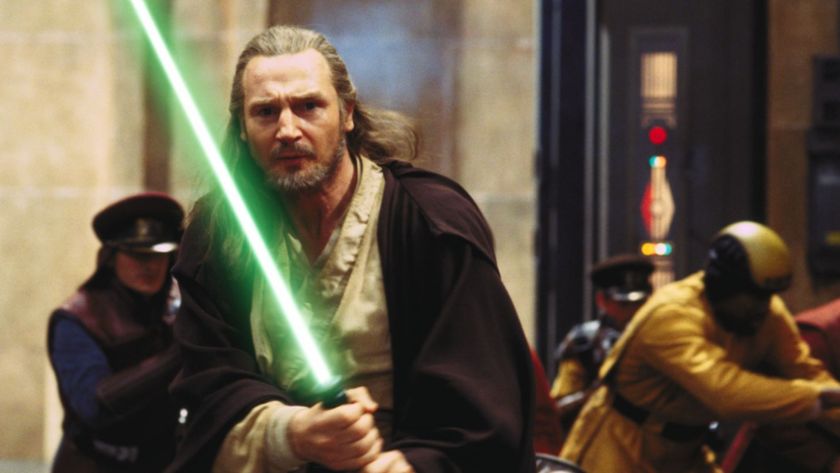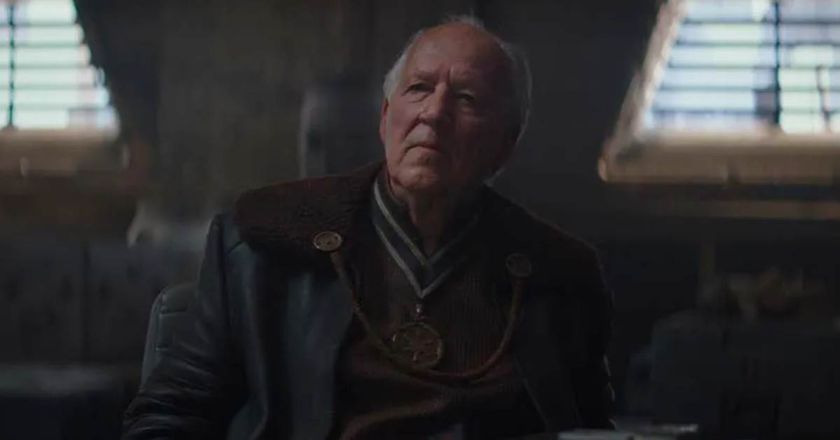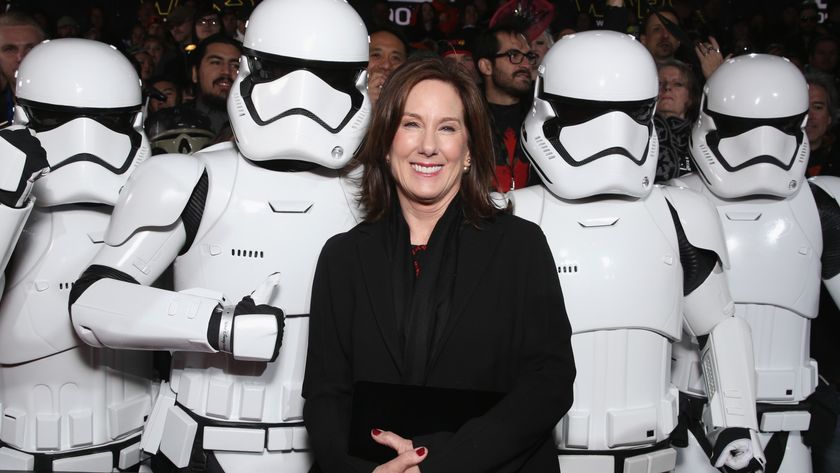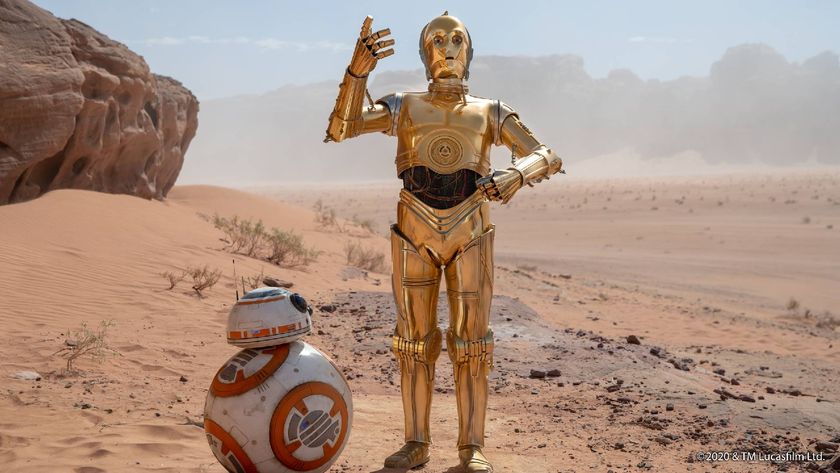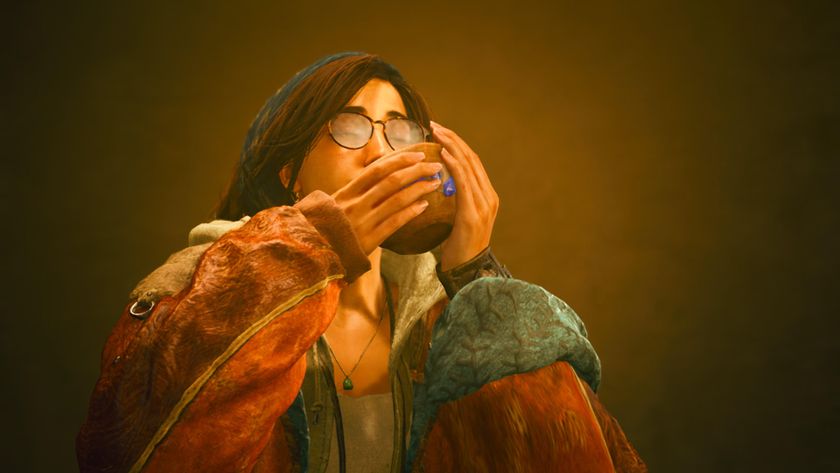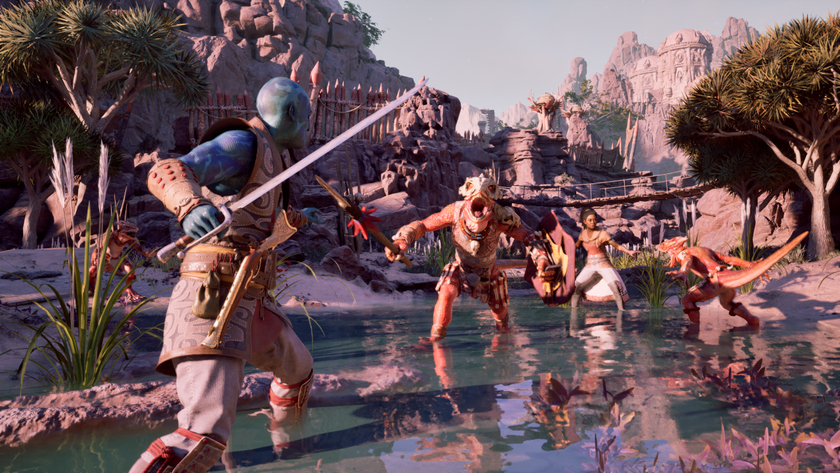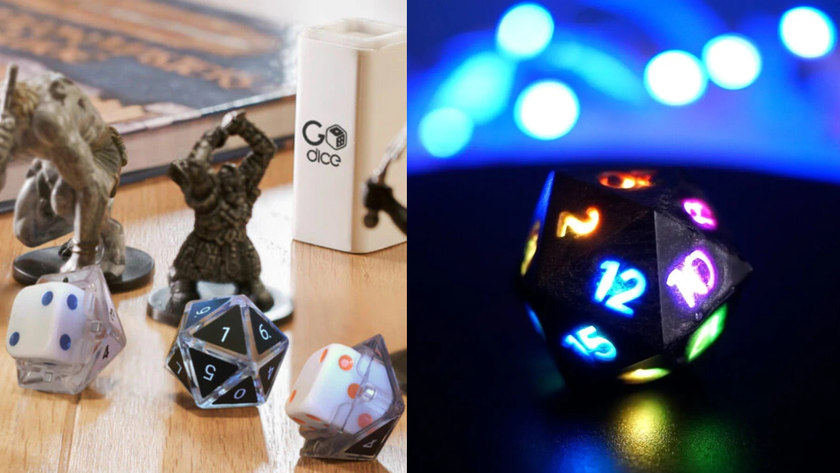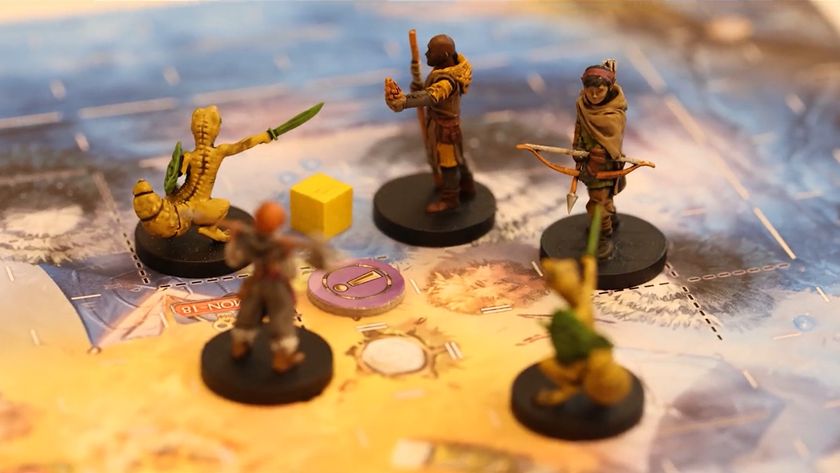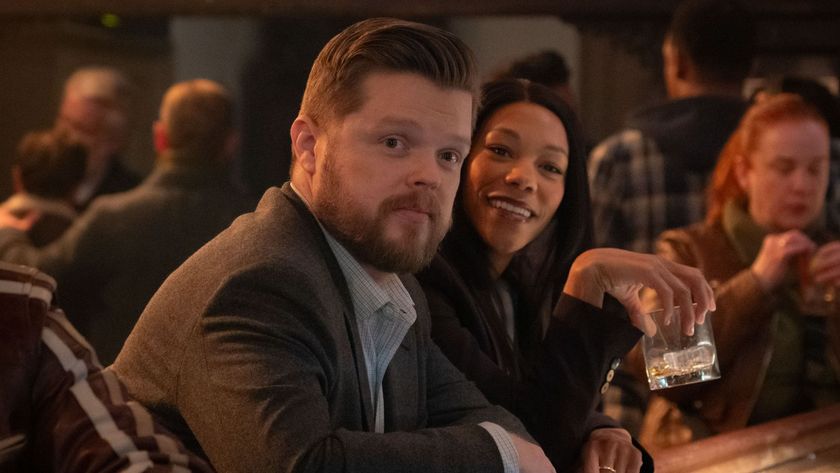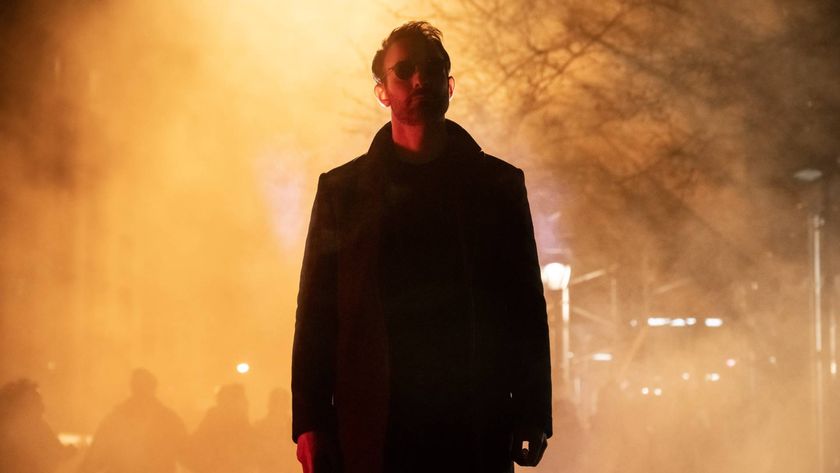32 movies that inspired Star Wars
How samurai flicks and World War 2 epics informed a galaxy far, far away
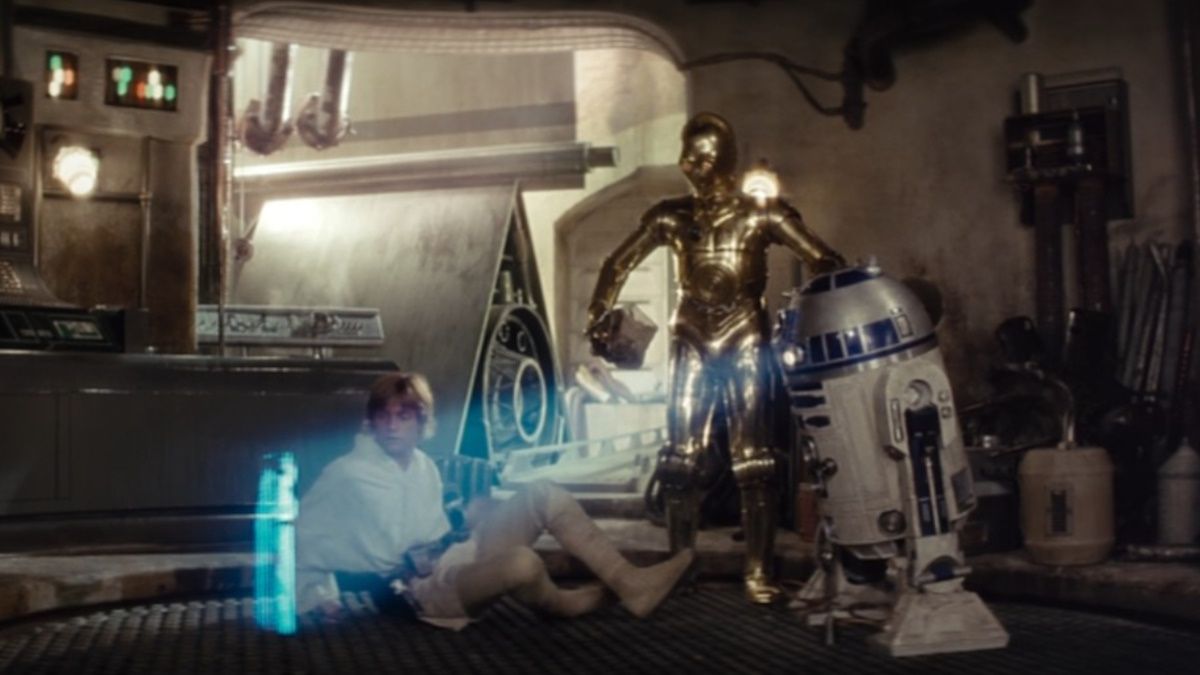
A long time ago, in a California desert far, far away, a group of filmmakers, artists, and special effects pioneers made one of the greatest movies of all time: Star Wars, released in 1977 (and since retitled Star Wars: A New Hope). A game-changing blockbuster, A New Hope launched the epic and expansive Star Wars franchise. But as cool as the many action figures and video games and extended universe novels may be, at its core Star Wars is primarily a series of moving pictures with words and sounds. The inspiration for the many Star Wars movies and shows isn't necessarily other science fiction stories, but other movies from other master storytellers.
From Japanese samurai flicks to gritty war movies, the visual language and tonal atmosphere of Star Wars is rooted in decades upon decades of film history. Here are 32 movies that inspired Star Wars creator George Lucas, as well as his many successors.
32. The Dam Busters (1955)
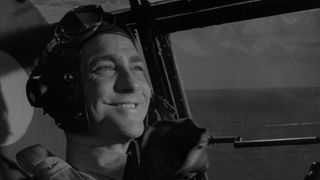
George Lucas wasn't just a sci-fi fan. He was also an aviation enthusiast who admired World War 2 planes and especially World War II films. Influencing Lucas' understanding of space dogfights was real footage of World War 2 aviators, as well as some popular war movies of the time. As observed in an article by Smithsonian in 2020, Lucas took heavy inspiration from the 1955 film The Dam Busters to craft the iconic "Trench Run" sequence in A New Hope.
31. Blade Runner (1982)
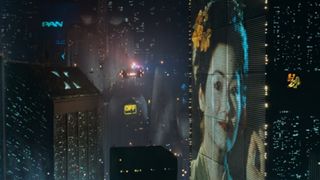
Towering buildings, neon lights, shadowy figures lurking on every corner – Is this Los Angeles of 2017 as seen in Ridley Scott's Blade Runner? Actually, we're talking about Coruscant. While Fritz Lang's Metropolis played a big part in influencing the art deco look of Coruscant, another major influence was Ridley Scott's Blade Runner, set in a dystopian "future" year of 2017. The seminal movie's bleak vision of a densely designed, overcrowded L.A. lit entirely by neon has influenced countless filmmakers including George Lucas during the making of Attack of the Clones.
30. Kagemusha (1980)
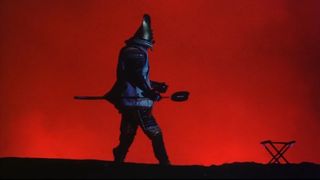
When George Lucas became a Hollywood bigwig following the success of Star Wars, the director jumped at the chance to pay back his idol Akira Kurosawa. In 1980, Lucas used his sway to convince 20th Century Fox to partially finance Kurosawa's technicolor masterpiece Kagemusha, a samurai epic about a lowly thief who is thrust into the position of imitating a dying feudal lord. (Lucas, as well as Francis Ford Coppola, are credited as executive producers.) Years later, Dave Filoni cited Kagemusha – with its use of darkened silhouettes against bold red backgrounds – as a major inspiration for an episode of Ahsoka.
29. Lawrence of Arabia (1962)
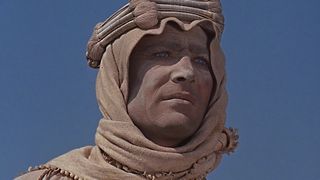
David Lean's three-and-a-half-hour epic Lawrence of Arabia has undoubtedly been a major influence on filmmakers around the world. George Lucas is easily among them. Not only did Star Wars shoot in some of the same locations as Lawrence of Arabia – from Wadi Rum in Jordan to Plaza de España in Spain – but its story about the impact of war on people is clear across both movies. They are also both prominently set in exotic deserts, and star one Sir Alec Guinness. In Attack of the Clones, a key scene where Anakin and Padme walk around a palace followed by R2-D2 is composed exactly like a scene from Lawrence of Arabia.
28. The Fighting Devil Dogs (1938)
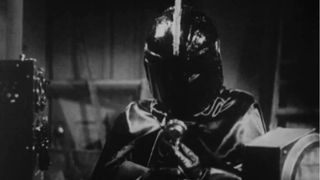
The Fighting Devil Dogs, a sci-fi war serial about Marines who seek to bring a masked terrorist called "The Lightning" to justice, has mostly flown under the radar. But it didn't escape George Lucas, who was so drawn to The Lightning that it inspired his own villain: Darth Vader. While it is popular knowledge that Lucas took design cues from real-world Japanese samurai, those influences synthesize with The Lightning. Like Vader, The Lightning is a masked menace in black, with an arsenal of lightning superpowers and his own aircraft.
Sign up for the Total Film Newsletter
Bringing all the latest movie news, features, and reviews to your inbox
27. 633 Squadron (1964)
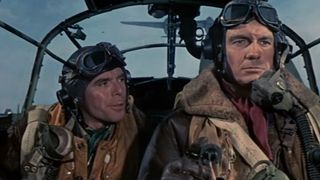
The iconic trench run scene in A New Hope didn't come from nowhere. The overall choreography of the iconic climax is heavily lifted from 633 Squadron, a 1964 World War 2 movie from director Walter Grauman. Just like in Star Wars, the climax of 633 Squadron sees the titular pilots flying through a deep fjord while being fired upon. George Lucas was such a big fan of this that he not only emulated it in Star Wars, but he also used scenes from 633 Squadron during the editing phase of Star Wars as a creative guide.
26. The Goonies (1985)
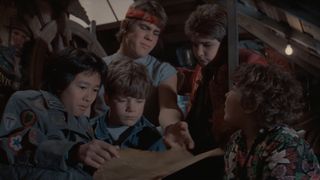
Shortly after the end of the original Star Wars trilogy, director Richard Donner and producer Steven Spielberg released the adventure comedy The Goonies, about young kids who embark on a hunt for pirate treasure while running from a criminal family. During the release of the Star Wars series Skeleton Crew, a number of critics and audiences saw similarities between Skeleton Crew and The Goonies. Such observations were on the money, as series creators Jon Watts and Christopher Ford confirmed The Goonies as an inspiration in a video interview with Comic Book Resources. "Those are the movies we grew up with, and sort of formed our imagination," Watts said. "The more interesting inspiration I think was that we also went back to old pirate movies from the '30s, in the same way that George Lucas was watching old World War 2 movies and samurai movies, and using those to influence the original trilogy." Watts further named Sea Hawk and Captain Blood.
25. The Wizard of Oz (1939)
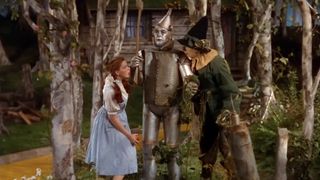
Without question the ultimate adventure movie, The Wizard of Oz has been a touchstone in countless other sci-fi and fantasy media. Star Wars is no exception. Back in 1977, when A New Hope (then titled just Star Wars) was entering theaters, actors like Mark Hamill and Carrie Fisher attempted to describe their movie as "like" The Wizard of Oz. Those similarities became explicit with the sequel The Empire Strikes Back, as concept artist Ralph McQuarrie took inspiration from Emerald City to design the look and feel of Cloud City.
24. Ben-Hur (1959)
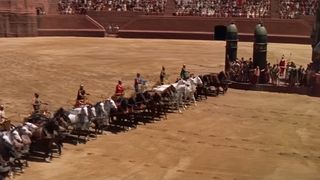
Now this is… chariot racing? That's right. The 1959 Biblical epic Ben-Hur, with its landmark chariot racing sequence, did much to influence George Lucas during the making of 1999's Star Wars Episode 1 – The Phantom Menace. The biggest and most glaring parallel between the movies remains their respective arena racing sequences, with Lucas taking after Ben-Hur's still-legendary chariot race to craft his own "podracing." While Star Wars fans are divided on the overall quality of The Phantom Menace, there's almost no arguing over podracing, and fans have Ben-Hur to thank.
23. Triumph of the Will (1935)
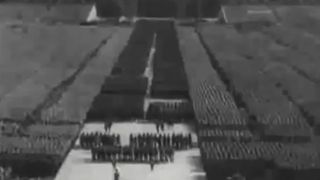
Being a Nazi propaganda film produced during World War 2, Triumph of the Will is an unambiguously ghastly thing. However, film scholars concede that the movie fundamentally shaped the cinematic language for depicting powerful regimes. That influence is none more apparent than in George Lucas' Star Wars. Beyond the Galactic Empire being unsubtly inspired by Hitler's Nazi party, several shots from the Star Wars series straight-up mimic what director Leni Riefenstahl envisioned. Virtually any time you see hordes of Stormtroopers standing in massive numbers or marching as one, those images descend from Triumph of the Will.
22. Three Outlaw Samurai (1964)
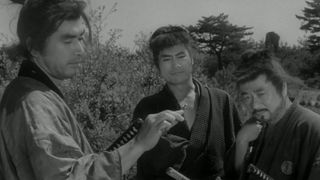
It is well known among Star Wars fans that George Lucas was a big fan of Akira Kurosawa. But Kurosawa wasn't the only filmmaker to make masterpieces of samurai cinema. In 1964, writer/director Hideo Gosha made his feature directing debut with Three Outlaw Samurai, an origin story prequel spun from his successful TV show. While making Star Wars: The Last Jedi, Rian Johnson told his crew to watch a number of classic movies, and included among them was Three Outlaw Samurai. Johnson told Uproxx in 2017: "This was kind of in lieu of rewatching Kurosawa, because I’m a big Kurosawa fan and I’ve seen his movies lots and lots of times. So I felt we were all familiar enough with Kurosawa, I thought let’s dig into some stuff that maybe we haven’t seen in the samurai genre."
21. Cool Hand Luke (1967)
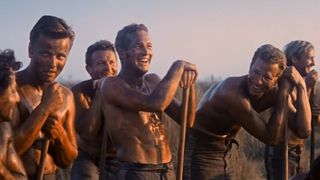
Arguably Paul Newman's greatest movie, Cool Hand Luke tells the story of a slick prisoner who maintains his calm while challenging his oppressive establishment and inspiring his fellow inmates. The movie thus served as a major touchstone over Andor, which takes place in an imperial prison and sweatshop late in its first season. In an interview with Vanity Fair, actor Andy Serkis – who played the supporting character Kino – confirmed that Cool Hand Luke and The Shawshank Redemption were definitely movies that were explicitly talked about during production.
20. The Godfather (1972)
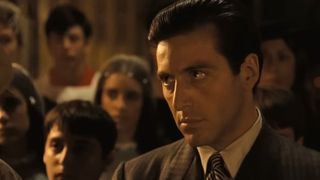
What do Anakin Skywalker and Michael Corleone have in common? Not much. But it's underscored as a tragedy when they both finally accept their fated destinies. In 2005's Revenge of the Sith, Anakin Skywalker and the execution of Order 66 was intentionally modeled after the iconic "baptism" sequence in The Godfather, where Michael Corleone accepts his role as "Godfather" to his nephew whilst orchestrating hits against all who stand in his way of consolidating power. The Italian mafia and the Jedi may be worlds apart, but they were both taken by surprise on one fateful day.
19. Crouching Tiger, Hidden Dragon (2000)
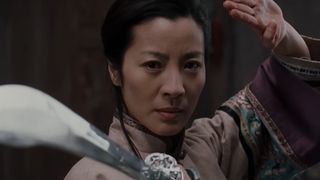
While Star Wars is predominantly inspired by Japanese samurai films, the Disney Plus series The Acolyte sought different inspirations in the form of Chinese wuxia. Series showrunner Lesley Headland told Collider in 2024 how Ang Lee's international blockbuster informed a key relationship for her series. "[T]he relationship between Lo and Jen in Crouching Tiger, Hidden Dragon was an influence in the writer's room. We referenced that relationship over and over again," Headland said. "The intentional parallel is that they are equals and their relationship is earned through mutual vulnerability, not intimidation or manipulation."
18. The Dirty Dozen (1967)
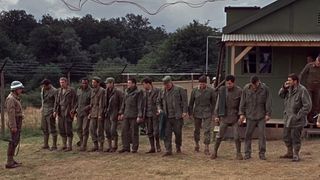
"Miscreants on a mission" is a story archetype seen in everything from The Wild Bunch (1969) to Armageddon (1998) to Guardians of the Galaxy (2014). But all such movies owe a debt to The Dirty Dozen, the legendary 1967 war movie directed by Robert Aldrich. So it should be no surprise that The Dirty Dozen was a major touchstone for 2016's Rogue One: A Star Wars Story, the first in a short-lived anthology series of Star Wars movies. Though none of the filmmakers of Rogue One have said as much on record, numerous critics and fans have pointed out these comparisons, right down to the grittier vibe of Rogue One compared to other movies in the saga.
17. Seven Samurai (1954)
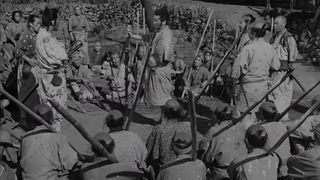
It's common knowledge that George Lucas was a major Akira Kurosawa fan and riffed over Kursoawa's The Hidden Fortress to make Star Wars. But Kurosawa's most celebrated movie is easily Seven Samurai (1954), widely considered one of the greatest motion pictures ever made. In a video interview with Criterion circa 2014, Lucas said his first Kurosawa movie was Seven Samurai, which made him fall in love with the Japanese filmmaker. Other storytellers in the Star Wars franchise have paid direct homage to Seven Samurai, with specific episodes of Star Wars: The Clone Wars and The Mandalorian replicating the movie's premise, which tells of seven diverse warriors who band together for an altruistic cause.
16. Twelve O'Clock High (1949)
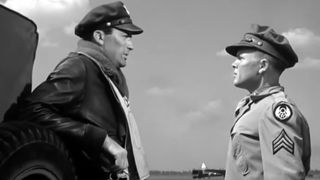
Henry King's 1949 war movie Twelve O'Clock High is centered around a unit of American pilots whose cohesion is in disarray until Gregory Peck, as the super serious Brigadier General Frank Savage, whips them into fighting shape. In a January 2017 interview with Empire, The Last Jedi director Rian Johnson named Twelve O'Clock High as a major artistic influence on his Star Wars movie, specifically in making The Last Jedi's "feel and look of aerial combat" and the "dynamic between the pilots."
15. Heat (1995)
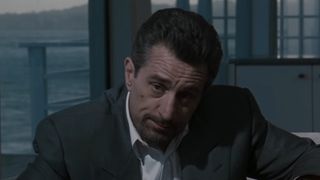
Even Star Wars can't resist the mastery of Michael Mann. Although Mann's acclaimed crime-drama Heat came out in 1995, far after the original trilogy, the movie still played a role in influencing a galaxy far, far away. During the release of 2018's Solo: A Star Wars Story, writer Jonathan Kasdan name-checked Heat as a point of reference for the dynamic between Han Solo and his grizzled mentor Tobias Beckett. Kasdan told Entertainment Weekly: "We talked about the relationship between Val Kilmer and Robert De Niro in Heat, where there's a sort of older, wiser criminal, and then someone who's learning the ropes from them. We wanted this movie to have that flavor and that swagger."
14. The 7th Voyage of Sinbad (1958)

Stop me if this sounds familiar to you: A dashing hero rescues a princess by carrying her across a wide chasm, all while standing up against an evil sorcerer. If that sounds like Star Wars to you, good! But that description also fits The 7th Voyage of Sinbad, the hit 1958 action-adventure blockbuster that is also an achievement in special effects (courtesy of the legendary Ray Harryhausen). So much of The 7th Voyage of Sinbad is found in Star Wars, from its many monsters to the hordes of skeletal armies (Stormtroopers and Clone Troopers, anyone?). At its heart, Star Wars is a swashbuckler, and few swashbucklers are as seminal as Sinbad.
13. Gunga Din (1939)
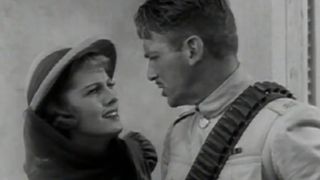
While making Star Wars: The Last Jedi, writer/director Rian Johnson hosted a screening of classic movies to make sure his intended vision for the movie was firmly understood by his crew. Among the movies Johnson curated was 1939's Gunga Din, a classic adventure film of the Hollywood Golden Age. In an interview with Uproxx in 2017, Johnson said he included the movie to tap into its spirit of lighthearted adventure pulp. "[We watched] Gunga Din mostly because it's the closest of all the things we watched that has, I think, that sense of kind of poppy adventure, that maybe more influenced the Indiana Jones trilogy."
12. Clerks (1994)
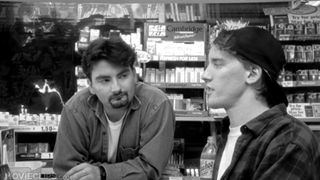
Yes, the Kevin Smith flick about two New Jersey convenience store slackers who love Star Wars also inspired Star Wars. In a Rolling Stone interview in 2022, Andor showrunner Tony Gilroy said the show's exploration of Cassian's imprisonment by the Galactic Empire was inspired by Clerks. The seminal indie comedy has a memorable scene where characters debate over the ethics of being in business with the bad guys. "In 'Clerks' they talk about who's cleaning up the Death Star, right? Like, who's building all these ships?" Gilroy said. "The amount of material that the Empire has is just epic. Where does it come from? Where does all that stuff come from? So we're trying to say, 'Man, it's a massive effort to build all these ships and build all these weapons, and build all these buildings … All this stuff needs to be built and I don't think everybody was getting $15 an hour to do it."
11. The Searchers (1956)
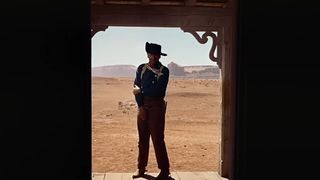
This iconic Western epic, where John Wayne plays a Civil War veteran who searches for his niece after she's kidnapped by Comanches, seems like an unlikely inspiration for George Lucas' Star Wars. But the movie's expansive desert scenes heavily informed the look and feeling of Luke's life on Tatooine – as well as his aunt and uncle's farm being set ablaze. Years later, Lucas returned to The Searchers to show Anakin's search for his mother after she's taken by Tusken Raiders in 2002's Attack of the Clones.
10. Come Drink With Me (1966)
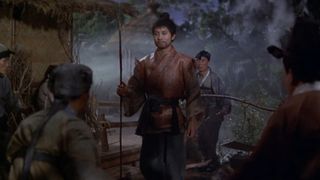
The big plot twist in The Acolyte, in which the masked Sith lord known as "The Stranger" was actually (spoilers!) the lowly smuggler Qimir (played by Manny Jacinto) took many Star Wars fans by surprise. In an interview with Entertainment Weekly in 2024, series showrunner Lesley Headland named the movie as the main inspiration for The Stranger. Just like in The Acolyte, Come Drink With Me features an oft-inebriated character named Drunken Cat who is later revealed to be a powerful Shaolin warrior. The only difference between the two is that while Drunken Cat's kung fu prowess is used for good, The Stranger is a force for the Dark Side.
9. Yojimbo (1961)
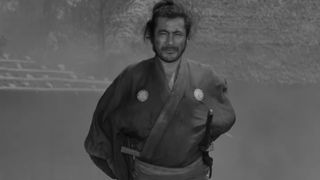
A wandering warrior walks into a small town to confront the corrupt businessman who wields immense power over helpless townsfolk. Sound familiar? While this description suits "The Jedi," The Mandalorian's fifth episode of Season 2, it's also the same plot summary of Akira Kurosawa's Yojimbo. Kurosawa's influence on George Lucas is legendary, and it's no surprise that Lucas' own student and successor Dave Filoni similarly looks to Kurosawa for inspiration. Besides the story parallels, Filoni intentionally mimicked the visual composition of Yojimbo for several key shots. The Mandalorian series as a whole is also heavily inspired by Yojimbo, with its first season doing a great deal to shroud its skilled protagonist in mystery just like Toshiro Mifune's antihero ronin.
8. A Fistful of Dollars (1964)
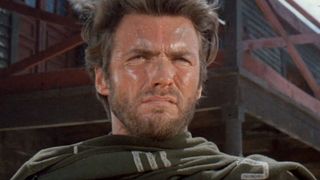
"I thought of Boba Fett as Clint Eastwood in a suit of armor." That's what actor Jeremy Bulloch once said about his iconic Star Wars character Boba Fett, the masked bounty hunter clad in Mandalorian armor. During the making of The Empire Strikes Back, George Lucas sought inspiration from actor Clint Eastwood, and more specifically, his nameless gunslinger who originates from Sergio Leone's Dollars Trilogy. Actor Jeremy Bulloch similarly turned to Eastwood for inspiration, posturing and walking like Eastwood in A Fistful of Dollars.
"I always thought of him as Clint Eastwood in A Fistful of Dollars," Bulloch told the one-issue Star Wars: Boba Fett magazine in 1998. "That was my model."
7. The Battle of Algiers (1966)
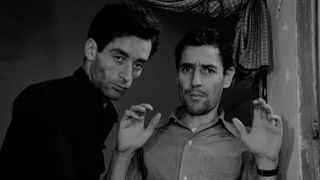
Filmmaker Benjamin Caron, who directed several episodes of Andor including the finale, told The Hollywood Reporter that his favorite movie of all time is The Battle of Algiers. In that same interview, he mentioned how Tony Gilroy's scripts for the show often felt like The Battle of Algiers, to which Gilroy responded positively. "And so we just jammed about how great that film is and how much of that flavor and texture we could get from it. So that became a big reference point for the [season one] finale where the locals rise up against the Empire," Caron said.
6. The Bridge on the River Kwai (1957)
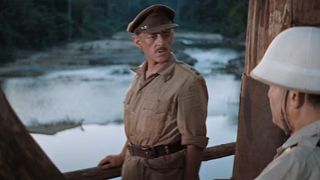
While making the 2017 Star Wars installment The Last Jedi, writer/director Rian Johnson held a screening of several classic movies to help his crew understand his intended vision. One of them was 1957's The Bridge on the River Kwai, a classic war picture about American and British POVs forced to build a bridge for their Japanese captors. In a 2017 chat with Uproxx, Johnson described both The Bridge on the River Kwai and The Last Jedi as mission movies. "[T]he thing I had remembered about it, which on the rewatch, I was glad I revisited, was kind of the amount of personal emotion that gets into a mission movie and the degree to which you deeply care about the characters," Johnson said. "You can see it reflected a little in the Admiral Holdo and Poe thing, the uneasy kind of tension between them."
5. To Catch a Thief (1955)
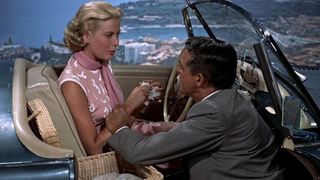
While a subplot in The Last Jedi involving the casino planet Canto Bight isn't loved by all Star Wars fans, Rian Johnson didn't pull that idea from nowhere. In an interview with Vanity Fair in 2017, Rian Johnson mentioned that the overall look and feel of Canto Bight was inspired not only by Monte Carlo in Monaco, but also James Bond and "a little To Catch a Thief." The iconic romantic-thriller from Alfred Hitchcock stars Cary Grant as a reformed burglar who catches an impostor preying on wealthy tourists on the French Riviera. "It was an interesting challenge, portraying luxury and wealth in this universe," Johnson said. "I was thinking, O.K., let’s go ultra-glamour. Let's create a playground, basically, for rich assholes."
4. 2001: A Space Odyssey (1968)
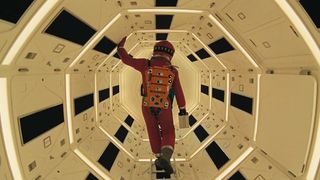
Stanley Kubrick's landmark sci-fi epic 2001: A Space Odyssey is not the first movie to depict space exploration. But it remains one of the most eye-opening, depicting space travel in all its magnificent and horrifying glory, all while employing an impressive level of practical effects. George Lucas has gone on record saying that 2001: A Space Odyssey is a huge influence on his own work, based on an interview for a 2007 DVD featurette. From the movie's ample depictions of spaceships in motion to the psychedelic approach to showing hyperspace travel, there simply is no Star Wars without 2001: A Space Odyssey.
3. Metropolis (1927)
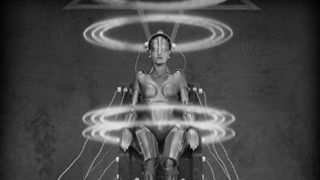
To say Fritz Lang's Metropolis is an influential sci-fi movie is an understatement. But one look at the "Maschinenmensch" and it's hard to deny where C-3PO came from. Both George Lucas and Star Wars concept artist Ralph McQuarrie referenced Lang's Metropolis and the character of "Maria" (played by Brigitte Helm) to come up with the look of C-3PO. Of course, there's other elements from the movie that inspired Star Wars like the tension between upper and lower castes and the sprawling art deco city of Coruscant in Attack of the Clones. But C-3PO is the most direct echo to Lang's masterpiece.
2. Flash Gordon (1936)
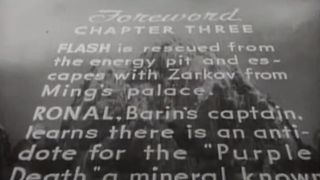
One look at the scrolling title is all it takes to know what Flash Gordon means to Star Wars. Predating both the Marvel and DC superheroes, the dashing space hero Flash Gordon – created by Alex Raymond in 1934 – began life as a comic strip before leaping to live-action in 1936, through a popular film serial. While so much of Flash Gordon's story acts as a template for the story of Luke Skywalker, its cinematic influences are more obvious. In fact, Lucas originally sought the rights to make a Flash Gordon movie. When he couldn't, he went off and made his own sci-fi adventure. A story from a long time ago, in a galaxy far, far away…
1. The Hidden Fortress (1958)
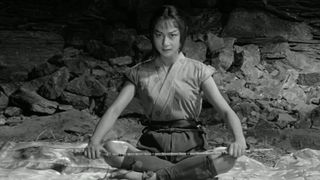
George Lucas has never been shy about his admiration of director Akira Kurosawa. While virtually all of Kurosawa's movies left an imprint on Lucas' artistic vision, 1958's The Hidden Fortress is maybe the most glaring. Like Star Wars, the movie follows the smuggling of a feudal princess with the help of two bumbling peasants. Translating that to Star Wars, it's why 1977's A New Hope is about the rescue of Princess Leia with two droids in tow. Beyond the story, many of Kurosawa's touchstones, such as wipe transitions and silhouettes, have also become part of Star Wars' visual language.

Eric Francisco is a freelance entertainment journalist and graduate of Rutgers University. If a movie or TV show has superheroes, spaceships, kung fu, or John Cena, he's your guy to make sense of it. A former senior writer at Inverse, his byline has also appeared at Vulture, The Daily Beast, Observer, and The Mary Sue. You can find him screaming at Devils hockey games or dodging enemy fire in Call of Duty: Warzone.
